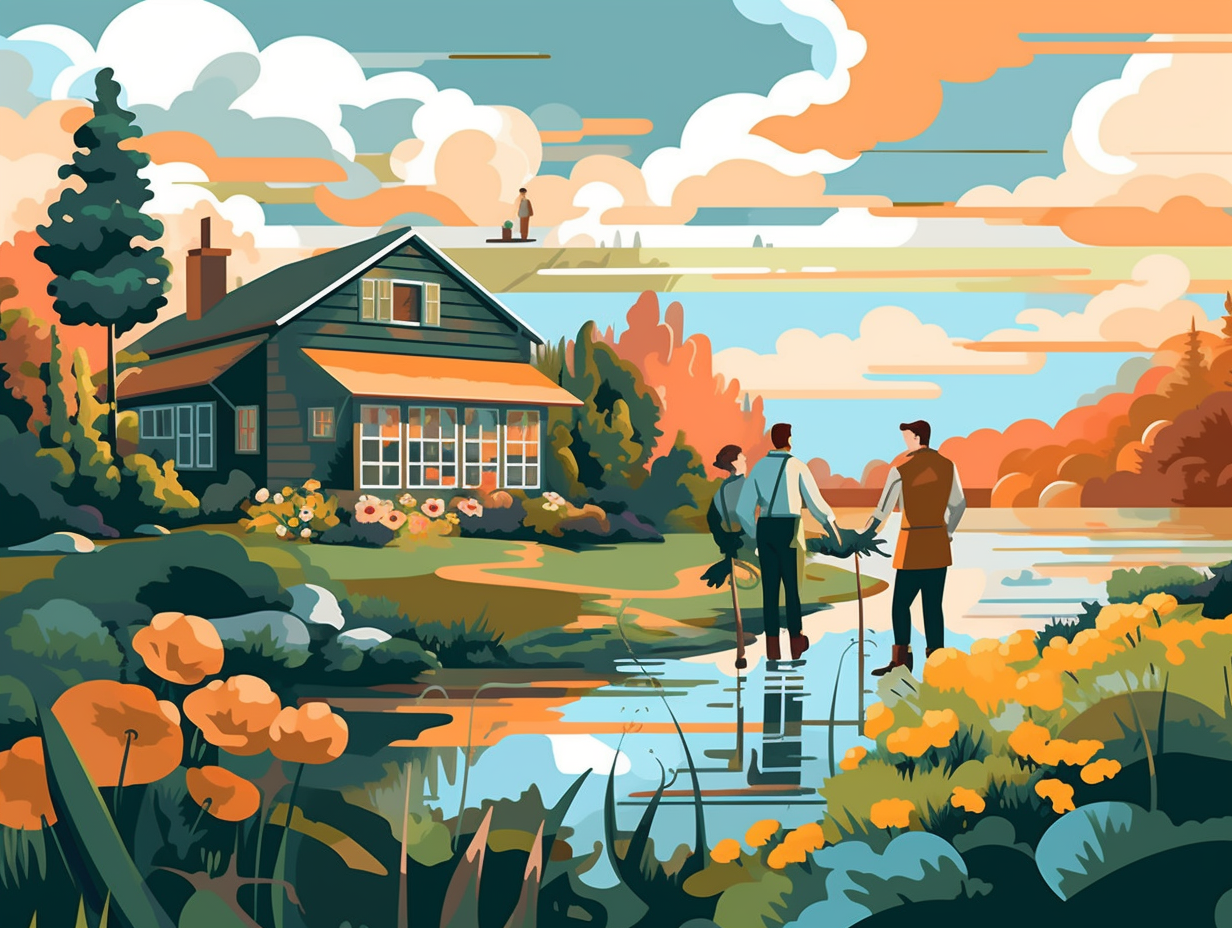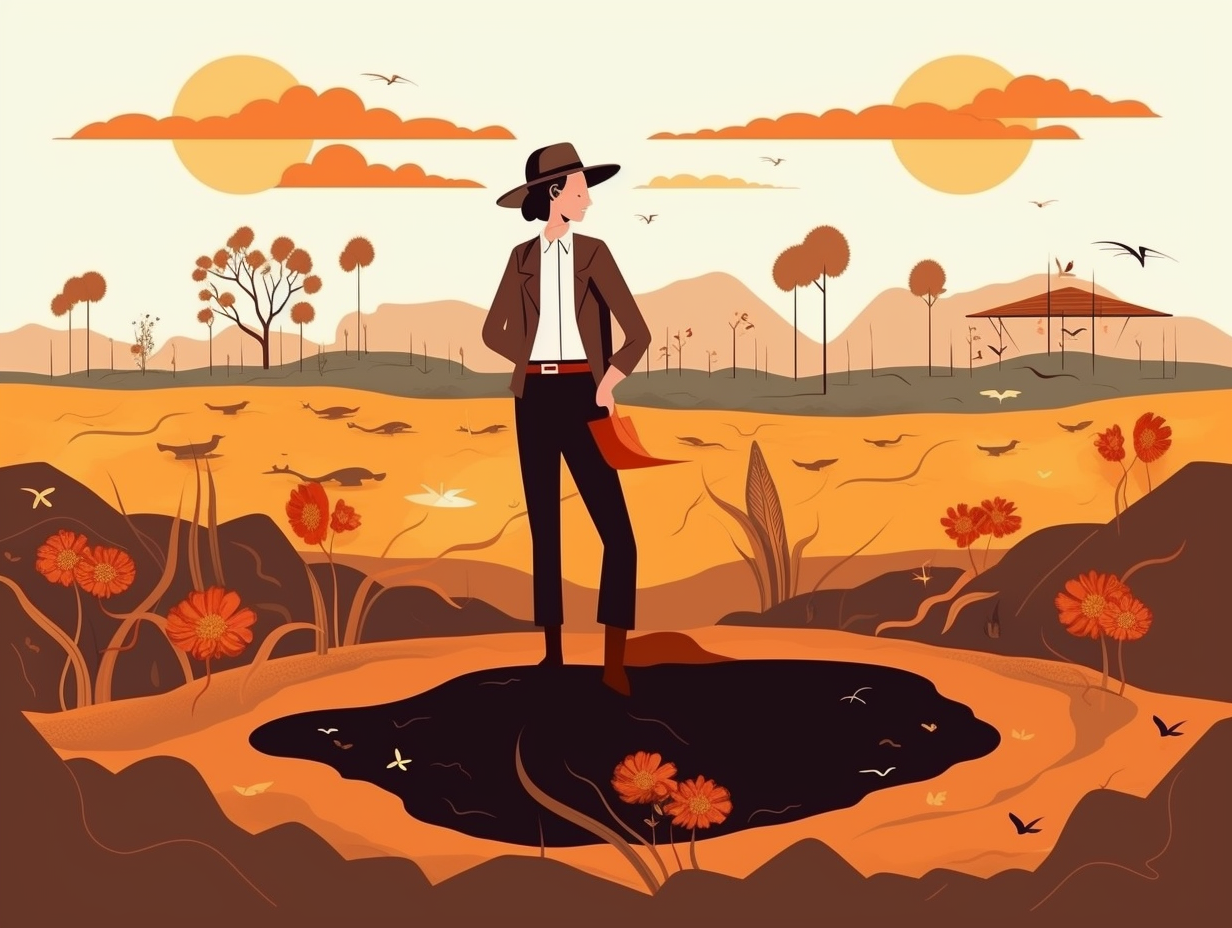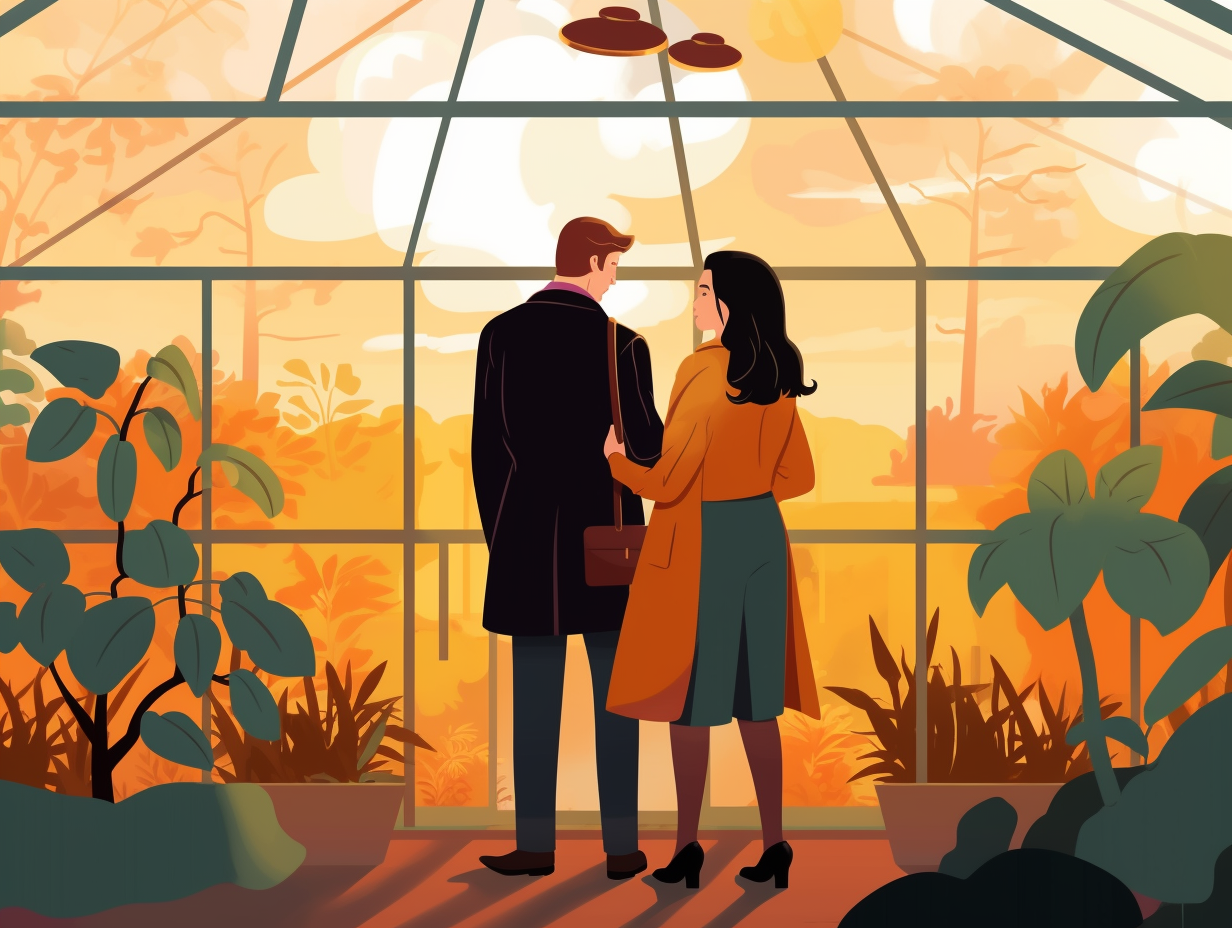Transform Your Garden: Top 14 Surprising Landscaping Fun Facts You Can't Miss

1. Rain Gardens: Nature's Playground
Why should humans have all the fun splashing in puddles like Peppa Pig? Rain gardens are Mother Nature's playground too: These eco-friendly landscaping additions collect rainwater from roofs, driveways, or streets, letting it soak into the ground while serving as a habitat and buffet for butterflies and songbirds, all the while filtering out any pollutants hitching a ride in the runoff.
Source => epa.gov
2. Stuffed Topiary: Landscape Art
Feeling a bit "vine-y" and looking for a creative outlet that'll truly grow on you? Well, landscaping's got just the thing: stuffed topiary involves growing creeping vines on metal frames to create intricate designs and is not only one of the quickest ways to create topiary but requires regular maintenance to ensure the plants cover the frame just right.
Source => agrikrit.com

Did you know horticulturists created a real-life rainbow rose by dipping white rose stems into colorful potions? Discover the magic behind this chromatic wizardry and the stunning multihued flower it creates! 🌹🌈✨
=> Fun Facts about Horticulture
3. Moss: The Zen Garden Star
Who would have thought that moss could be the life of a Zen party? It's A-lister status surely doesn't go unnoticed in Japanese gardens: Moss plays a starring role as a symbol of age and tradition, while also providing a vibrant green carpet to contrast the gravel or sand, serving both practical and aesthetic purposes that elevate the peaceful atmosphere.
Source => danslegris.com
4. "Backyard Envy": Gardeners' Reality TV
Forget Bachelors in Paradise, try Gardeners in Drama: Bravo's "Backyard Envy" not only teaches viewers about plants and landscaping techniques but has them biting their nails as they watch the founders of Manscapers navigate personal and professional tension while transforming treacherous backyards into heavenly havens.
Source => mercurynews.com

5. Lasagna Gardening: Delicious Layers
Hold on to your forks, folks, because lasagna isn't just for dinner anymore: Lasagna gardening is an ingenious method of creating a nutrient-rich garden bed by layering organic materials like culinary masterpieces, without any need for tilling or digging! Start this delicious gardening technique in the fall, and by spring, your layers of brown and green waste, soil, and straw will have broken down into the perfect garden soil, ready for planting season. Mangiamo!
Source => simplifylivelove.com
6. Mowing High: Grass Saviors
Don't be a grassholesicle: Did you know that giving your lawn a buzzcut is like leaving it in the cold, depriving it of the ability to cook up a healthy meal and set down strong roots? That's right, showing some lawn-titude by opting for some extra inches can actually help your greenery grow to greater heights, making it less of a weed playground and cutting back on its urge to quench its thirst. Mowing high, you see, acts like a weed whacker and a supercharger, all while keeping your turfgrass on cloud nine.
Source => spring-green.com
7. Dandelion Delights: Nutritious Weeds
Whoever said a weed can't be a delicious luxury didn't know the dandy dandelion: This unassuming backyard nuisance is a powerhouse of nutrition, boasting 535% of the daily recommended vitamin K and 112% of vitamin A in its leaves, while its roots can be brewed into a tea to boost immunity, aid digestion, and even combat urinary tract infections, transforming the humble dandelion into a surprisingly scrumptious and health-benefiting treasure.
Source => michigansthumb.com
8. Dirty Therapy: Gardeners' Zen
Feeling down and dirty? Get down and dirty, literally: Studies show that gardening and landscaping activities, such as horticultural therapy, can alleviate anxiety and depression, sharpen focus, lower cortisol levels - the stress hormone - and even stimulate serotonin production because the soil contains bacteria with antidepressant attributes. Who knew Mother Nature was prescribing doctor-approved therapy all along?
Source => healthline.com
9. Eco-friendly Lawn Care: Edward Scissorhands Style
Who knew Edward Scissorhands was an eco-warrior: mowing a lawn emits the same amount of pollution as driving a car for 11 miles! With around 90 million U.S. households boasting their private patches of green, we all need to be more mindful of our $503 average yearly lawn care costs' environmental impact. Opting for greener alternatives and ditching gas-guzzling equipment can help lessen our lawny footprint on Mother Earth.
Source => blog.gitnux.com

10. Hugelkultur: Matchmaking for Plants
Looking for a natural "matchmaker" to hook up plants and friendly organisms in a healthy, long-term relationship? Say hello to Hugelkultur beds - the ultimate sustainable dating platform for your garden favorites: These mounded raised beds, made of rotting wood and plant debris, provide a self-sustaining ecosystem by acting as a natural sponge to store water, release nutrients slowly, and improve soil fertility. Ideal for plant species like cucumbers, legumes, melons, potatoes, and squashes, these beds not only bring gardening bliss but also age like fine wine, becoming drought-resistant over time.
Source => almanac.com
11. Nebuchadnezzar: Legendary Master Gardener
In a plot twist worthy of an Indiana Jones movie, history sleuths and archeology buffs have been hot on the trail of a rather elusive master gardener named Nebuchadnezzar and his famed horticultural creation: The Hanging Gardens of Babylon may or may not have existed, but their legendary status sparked the beginnings of landscape design for pleasure in the Fertile Crescent, with extravagant private gardens, detailed frescoes, and intricate waterworks popping up amongst the homes of the wealthy, setting the stage for horticultural haute couture for millennia to come.
Source => worldhistory.org
12. Bonsai: The Art of Miniature Trees
Whoever said size doesn't matter never tried to fit a tree in a teacup: Bonsai, which originated in 7th century China as 'pun-sai', found its way to Japan during the Kamakura period, maturing under the influence of Zen Buddhism and the nation's petite landscape, ultimately resulting in the highly refined aesthetic techniques, styles, and tools that are still used today for growing perfectly proportioned miniature trees.
Source => bonsaiempire.com
13. French Drains: Saving Homes & Landscapes
Why did the French drain go to therapy? It had separation issues: Originating from the mind of Henry Flagg French in the 19th century, French drains keep water at a safe distance from homes and properties, avoiding unwanted wet disasters. Plant some greenery around it, and you've got a stylish landscape solution that saves your home and keeps erosion at bay!
Source => thetreecenter.com
14. Mulch: The Unsung Gardening Hero
Mulch ado about nothing: not just a Shakespearean classic but also a gardening powerhouse! In fact, mulch not only showers the soil with nutrients and deters our arch nemesis, the pesky weed, but also moonlights as a climate-controlled superhero, safeguarding plant roots against volatile temperature swings and dressing up as an evaporation police officer to retain water.
Source => homegarden.cahnr.uconn.edu
Related Fun Facts




















